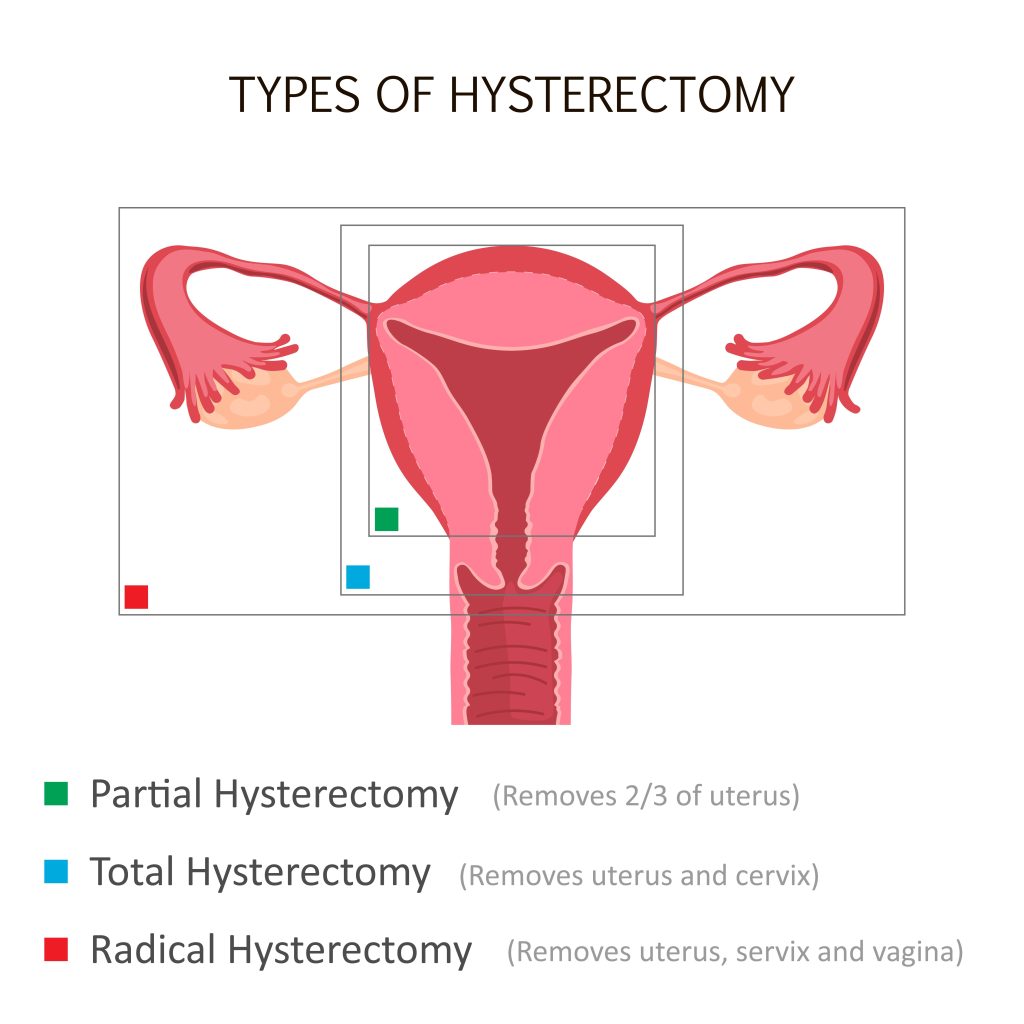Mark Kopec Now
Hysterectomy
Types and Potential Complications with the Baltimore Hysterectomy Lawyer
Welcome to the Kopec Law Firm website page on hysterectomy medical malpractice, providing an overview of the hysterectomy procedure, its different types, and potential complications. We understand the importance of accurate information, especially in the context of medical malpractice. If you have an injury, you may need the Baltimore hysterectomy lawyer.
Overview of the Anatomy
The uterus, or womb, is a hollow, pear-shaped organ located in a woman’s pelvis. It plays a crucial role in the female reproductive system, including:
- Menstruation: The shedding of the uterine lining.
- Pregnancy: The development and nurturing of a fetus.
- Childbirth: The delivery of a baby.
The cervix, the lower part of the uterus, connects to the vagina. The fallopian tubes extend from the sides of the uterus and connect to the ovaries. The ovaries produce eggs and hormones essential for reproduction.

Medical Conditions Requiring Hysterectomy and Their Symptoms
A hysterectomy, the surgical removal of the uterus, may be necessary for various medical conditions, including:
- Fibroids: Noncancerous growths in the uterus that can cause heavy bleeding, pelvic pain, and pressure.
- Endometriosis: A condition where tissue similar to the uterine lining grows outside the uterus, leading to pelvic pain, heavy bleeding, and infertility.
- Adenomyosis: A condition where the tissue that normally lines the uterus grows into the muscular wall of the uterus, causing pelvic pain and heavy bleeding.
- Uterine cancer: Cancer that starts in the uterus, often causing abnormal vaginal bleeding.
- Cervical cancer: Cancer that starts in the cervix, often detected through routine Pap smears.
- Chronic pelvic pain: Persistent pain in the pelvic region that may not be from a specific condition.
The Baltimore hysterectomy lawyer can review your medical condition and advise you on the treatment you received.
What Medical Providers to See for a Hysterectomy
A hysterectomy is a surgical procedure typically performed by a gynecologist, a doctor specializing in women’s health. However, other doctors, such as a general surgeon or urogynecologist, may also perform this surgery, depending on the specific circumstances and the patient’s needs.
Types of Hysterectomies
A hysterectomy is a surgical procedure to remove the uterus, which may or may not include the cervix, ovaries, and fallopian tubes. The type of hysterectomy performed depends on the underlying medical condition and individual patient factors. Here are the most common types:
- Total Hysterectomy
- What it is: Removal of the entire uterus and cervix.
- When it’s used: Fibroids, endometriosis, abnormal bleeding, cancer.
- Supracervical Hysterectomy (Subtotal)
- What it is: Removal of the upper portion of the uterus, leaving the cervix intact.
- When it’s used: Less common, may be considered in specific cases.
- Radical Hysterectomy
- What it is: Removal of the uterus, cervix, nearby tissues, and sometimes the upper part of the vagina.
- When it’s used: Treatment for certain types of uterine cancer.
- Hysterectomy with Salpingo-Oophorectomy
- What it is: Removal of the uterus, cervix, fallopian tubes, and ovaries.
- When it’s used: May be performed along with a total hysterectomy to reduce the risk of certain cancers.
The Baltimore hysterectomy lawyer can review the type of hysterectomy you underwent and advise you about potential medical malpractice claims.
Hysterectomy Surgery
The procedure can be performed through different approaches, including:
- Abdominal Hysterectomy: This involves making an incision in the lower abdomen to access and remove the uterus. Doctors commonly use this for larger uteruses or when they have to do additional procedures.
- Vaginal Hysterectomy: In this approach, the uterus is removed through the vagina without any external incisions. It may be suitable for certain conditions and when the uterus is of a normal size.
- Laparoscopic Hysterectomy: This minimally invasive technique involves making small incisions in the abdomen to insert a laparoscope and other surgical instruments. The doctor then removes the uterus in smaller pieces or through the vagina.
Complications Associated with Hysterectomy
While hysterectomy is generally a safe procedure, like any surgery, it carries potential risks and complications that can be indicative of medical malpractice. Complications that may arise include:
- Infection: Infections can occur at the incision site or within the pelvic region. Proper preoperative and postoperative care, including antibiotic administration, can help reduce the risk.
- Bleeding: Excessive bleeding during or after the procedure may require additional interventions, such as blood transfusions or surgical exploration.
- Damage to Surrounding Organs: The surgeon may damage nearby organs such as the bladder, ureters, or intestines, requiring further surgical repair.
- Adverse Reactions to Anesthesia: Some individuals may experience complications related to anesthesia, such as allergic reactions or respiratory problems. An anesthesiologist’s expertise is crucial in minimizing these risks.
- Blood Clots: Hysterectomy, especially when combined with other factors, can increase the risk of blood clots forming in the legs (deep vein thrombosis) or traveling to the lungs (pulmonary embolism). Medical providers often should employ preventive measures, such as early mobilization and blood-thinning medications.
Types of Potential Medical Malpractice Claims with the Baltimore Hysterectomy Lawyer
Medical malpractice occurs when a healthcare provider fails to provide reasonable care, resulting in harm to a patient. In the context of a hysterectomy, potential malpractice claims may arise from:
- Surgical errors: Mistakes during the procedure, such as damage to nearby organs or incorrect removal of tissue.
- Misdiagnosis: Delay in diagnosing a condition requiring a hysterectomy, leading to complications.
- Failure to obtain informed consent: Not adequately explaining the risks, benefits, and alternatives to the procedure.
- Post-operative complications: Failure to recognize or treat complications after surgery, such as infection or excessive bleeding.
- Medication errors: Incorrect prescribing or administering medications, causing adverse reactions or also other harm.
If you believe you may have been a victim of medical malpractice related to a hysterectomy, then it is crucial to consult with an experienced medical malpractice attorney to discuss your case and determine your legal options.
Next Step: Call the Baltimore Hysterectomy Lawyer
If you have suffered a serious complication following a hysterectomy, visit the free consultation page or video. Then contact the Kopec Law Firm at 800-604-0704 to speak directly with Attorney Mark Kopec. He is a top-rated Baltimore medical malpractice lawyer. The Kopec Law Firm is in Baltimore and pursues cases throughout Maryland and Washington, D.C.





